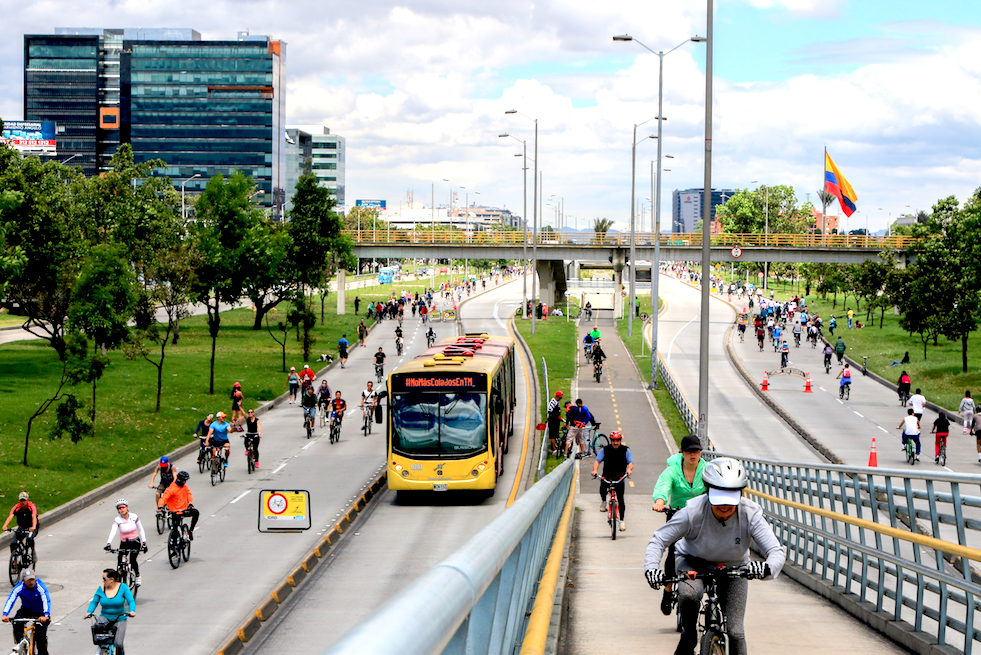• Flip Page • eNews • eSystems • eBikes • eAccessories • eAdventures • eCargo Bikes • eCities • eBike Tests • eFactory Tours • eRegulations •
Cycling Cities on the Move: Bogota, Colombia
October 9, 2020 - Population 7.413 Million – For decades, Bogota has been inspiring cities around the world to create innovative spaces for cycling.
Readers might be familiar with Ciclovias, or Open Streets, where streets are temporarily transformed into car- free spaces. These events got their start in Bogotà in the 1970s when community organizers persuaded the city to close off two central streets to vehicle traffic.
The initial events had over 5,000 people come out to ride their bicycles; over time, Ciclovia events have grown to include almost 70 miles of streets across Bogotà and 2 million weekly participants. Ottawa, Paris, Philadelphia, Mexico City and Cape Town are just a few of the many cities around the world that have adopted a similar approach.

Again in 2020, Bogotà has been a leader by incorporating cycling into its pandemic response plans. The city was one of the first to roll out an emergency cycling network in March, which included over 70km of bike lanes. The purpose was to increase the safety and mobility of essential workers during the pandemic.
As the result of a hackathon set up to find solutions to public transit challenges during the pandemic, medical workers were also provided with free access to MUVO’s fleet of 400 e-bikes.
In 2019, Bogotà was ranked on the list of the world’s top 20 cycling cities for the first time, coming in at #12 on the Copenhagenize Index. That same year, the city was recognized as the most congested city in the world.
Bold plans are underway to add almost 300km of new bike lanes to the existing network of 550km to help shift more trips away from cars. The city’s long-term goals include having 50% of all trips made by bike or some other form of micromobility, like e-scooters.







